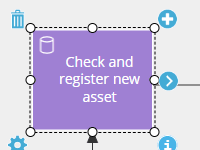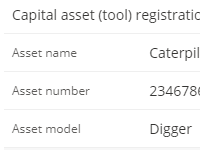
GLUU GUIDES
Guide to process improvement tools
Understand some of the best process improvement tools and which problems they can help you resolve.
There are many process improvement methods out there. Just think of Total Quality Management, Business Process Re-engineering, CMMI, Six Sigma and Lean. This guide is mostly focused on tools used within lean thinking where a holistic view of process improvement is in focus. Why? Lean stands out from the rest when it comes to involving employees and seeing process improvement as everyone’s job. This fits well with the culture of a modern, knowledge-intensive business with a lot of well-skilled employees. It also emphasises the need for ongoing learning.
Process improvement tools only work if they are used the right way – and to solve the right problems. This means laying the ground before you start. There are tools for that as well.
More in need of a plan? Check out our 8-step process improvement plan
Table of contents
Looking for something else? Explore these related articles:
The right tool for each step in your journey
Each part of your process improvement journey has its own useful and suitable tools. We have organised the tools this way:
- Connect with your company strategy
This is about ensuring the initial and ongoing connection between your strategy and your process improvement initiatives. - Prioritise and select the right process
Why and how you select which business areas and problems to target first. - Assign key roles & responsibilities
Deciding who should have the critical roles in your process improvement initiative. - Select the right process improvement tools
Will you be doing value stream mapping and then proceeding with A3 and 5S? Selecting the right process improvement tools to your organisation is critical.
For each area, we’ll cover why you need to consider it and give you an overview of the best tools and links to free tools, templates and further reading.
Examples of features of Process improvement tools

Simple process mapping
Map with five basic shapes to simplify understanding and use by employees across all levels.

Embedded digital forms
Attach forms to tasks and capture responses via the mobile app exactly when work is being done.
Process improvement tools to help you connect with strategy:
Policy Deployment (Hoshin Kanri)
Your process improvement efforts must contribute to your organisation’s overall strategy. If it is a top priority to increase customer satisfaction, then measure your process improvement initiatives on how they contribute to this. Policy deployment, or Hoshin Kanri, can clarify how the two are connected.
Essentially this method it is about cascading through all levels of your company through a “catch the ball process”. Top level management maps the overall value stream. This then connects with your improvement projects to improve specific processes down to activities that deliver results. In other words, the ball is thrown from senior management to middle management and to process owners and project managers who each run their own PDCA (Plan-Do-Check-Act) cycles.
Regular follow-up and reporting (also known as “report-outs”) ensure that each project stays on track in terms of delivering towards the strategy.
X-matrix
Some use an “X-matrix” to track what is being attempted versus what is being achieved.
”A system must create something of value, in other words, results.”
W. Edwards Deming

Process improvement tools that help you select the right process:
Once you agree on how your process improvement effort connects with your strategy and what successful improvement outcomes will be then it is about selecting the right process to start with. For this, there are three main project selection methods.
Use them together as a team or let each key stakeholder do their own scoring as a basis for discussion.
Pareto Priority Index
Pareto Priority Index is the cost-benefit perspective. It is about selecting the possible project that will give you the highest return on the invested resources. Calculate each suggested project using this tool to prioritise your projects by value:
We have created a tool so you can calculate the score of each process improvement idea:
Stakeholder scoring
While the Pareto Priority Index will give you a rational perspective, you also need to assess buy in from key stakeholders. For this your can let stakeholders score each project candidate on a scale from 1-5, where 1 is low and 5 is high.
We derive a score by multiplying all five factors since this will ensure that projects that do well on all accounts are rated higher than projects that only score highly on some parameters. Synergy matters.
Here is another tool to help you score process improvement ideas based on softer factors – share this with your stakeholders:
| Tip! |
| You could do a similar exercise for valuing projects based on strategic objectives. |
Process improvement tools that help you assign roles and responsibilities
Policy Deployment… again.
After using the previous tools you know how process improvement helps your company to deliver on its strategy. You also know which processes to prioritize. Now it’s time to pick a team. This means assigning key responsibilities to specific members of your organisation.
Where Six Sigma uses a very formal structure with the CEO as the “champion” and “Black Belts” for driving the effort, lean is less formalised about the governance. What matters is that you identify sponsors and champions at all levels. The key is to try to give formal roles to as many key people as possible. Again, Policy Deployment is useful from a role and responsibility perspective…
- The CEO, CFO or COO is the process improvement champion. He or she oversees the end-to-end connection of your processes so that your full value stream is covered.
- High-level middle managers own high-level processes.
- Middle managers or department managers own lower-level processes.
- Other key staff own remaining processes and activities and ensure day-to-day process execution and process improvement by the staff that report to them:

It is better to assign more part-time people than fewer full-time people. Why? Because this can help ensure the connection with day to day work. Your process improvement champions should use real work as the basis for process improvement. So, assigning someone for 20, 30 or 50% of their time can work well – if the person’s functional responsibilities are closely related.
Process improvement tools for finding waste and bottlenecks
Once you have connected with strategy, prioritized and found the right people then it is time to select the actual process improvement tools that will improve efficiency and effectiveness in the target area. For selecting comprehensive software to support your process improvement efforts, explore our BPM Software Selection Guide.
This is about selecting the right place in your value chain and then focusing and going deep to uncover waste and bottlenecks in your processes. So it starts with a good understanding of your value stream (this may even be useful to do at first, in some cases).
Value stream mapping
Lean’s definition of value is that it is something that the customer will pay for. Waste is something that the customer will not pay for. A value stream map is a visual depiction of the main flow from start to finish. It can be a common language for everybody so that your team can “learn to see” and understand what you do on a daily basis.
It is based on some key principles:
- The customer pulls.
It is started when the customer makes an order. Working backwards from the customer activities only start when the next activity requires its input. - There are internal and external customers.
Not all flows are directly targeting the external customer. Some have internal customers. - Flow is what matters.
Obstructions lead to waste and to customers waiting so it is about eliminating them and focus on the overall flow through the value stream. - Identify the value-adding activities to understand what is a waste.
Classifying activities into “Value-added”, “Value enabling” or “Non-value added” will help identify opportunities to eliminate waste (the non-value added activities). - You start by mapping the current state.
Your current state has to be well understood and stable before you can start improving to reach your target future state value stream map.
We will not go into the details of how you do value stream mapping but these principles are critical to keep in mind. Both when working with your value stream and your underlying processes. Sample value chain for software production:

A3 for problem-solving
An A3 is, as the name suggests, a single page that summarises a full problem analysis. It is a useful process improvement tool when working to eliminate the non-value adding activities that your value stream map uncovered.
A3 Template
Download an editable A3 template from the Lean Enterprise Institute.

5S for avoiding waste
5S is a workplace organisation method that comes from the Toyota Production System. It is about keeping the workplace tidy and organised. Even though it has originated within manufacturing this process improvement tool is still highly relevant for organising the knowledge worker’s workplace and the systems and tools he or she uses.
To organise the workplace for each role in your process you need to go through the following 5S phases:
| Sort | It is about ensuring that only the essential works tools are there. E.g. eliminate all unused functions from systems. |
| Set in order | Arrange tools in the work order. E.g. think of your ERP screens as a flow to ensure exactly the input that is needed. |
| Shine | Keep the workplace clean and tidy. In the service organisation, this may be about data quality. Also, many versions of the same file will confuse people. |
| Standardise | Standardise the best practices in the work area. Every process has a standard. E.g. who is the customer service team that has the most well-organised workstation? Copy and standardise from him or her. |
| Sustain | Make these workplace organisation efforts regular. Ensure that new workstations are set up in the right way. Perform regular audits and training to ensure everyone is on board with the importance of an effective workstation. |

5S Implementation
Download a 5S Implementation Guide. This is a factory guide from the Lean Enterprise Institute.

Keep all the moving parts of process improvement aligned
It gets harder the more processes and people you have. All the great offline process improvement tools need an enabling platform to realize improvements faster and in a more sustainable way:
Where do you start?
We hope this gave you an overview of useful process improvement tools – and how they can support your journey. If you’re looking for a place to start then read our 8-step process improvement plan.
Conclusions:
In conclusion, process improvement tools are essential for optimizing business processes. Starting with aligning strategies and selecting the right processes, these tools provide a systematic approach. Embracing Lean thinking ensures inclusivity and holistic improvement. Notably, a well-organized workplace and a suitable platform amplify their impact, fostering sustainable improvements. To begin your journey, explore our 8-step process improvement plan for a structured starting point.
Frequently Asked Questions
Lean thinking stands out for involving employees and making process improvement everyone’s job, aligning well with modern, knowledge-intensive businesses.
Tools like Policy Deployment (Hoshin Kanri) ensure a connection between process improvement efforts and the organization’s overall strategy, ensuring alignment.
Methods like Pareto Priority Index and Stakeholder Scoring aid in selecting projects based on cost-benefit perspectives and stakeholder buy-in.
Utilizing tools like Policy Deployment helps assign key responsibilities, ensuring that champions and sponsors are identified at all levels of the organization.
Tools like Value Stream Mapping, A3 for problem-solving, and 5S for workplace organization help uncover waste and improve efficiency in targeted areas.
